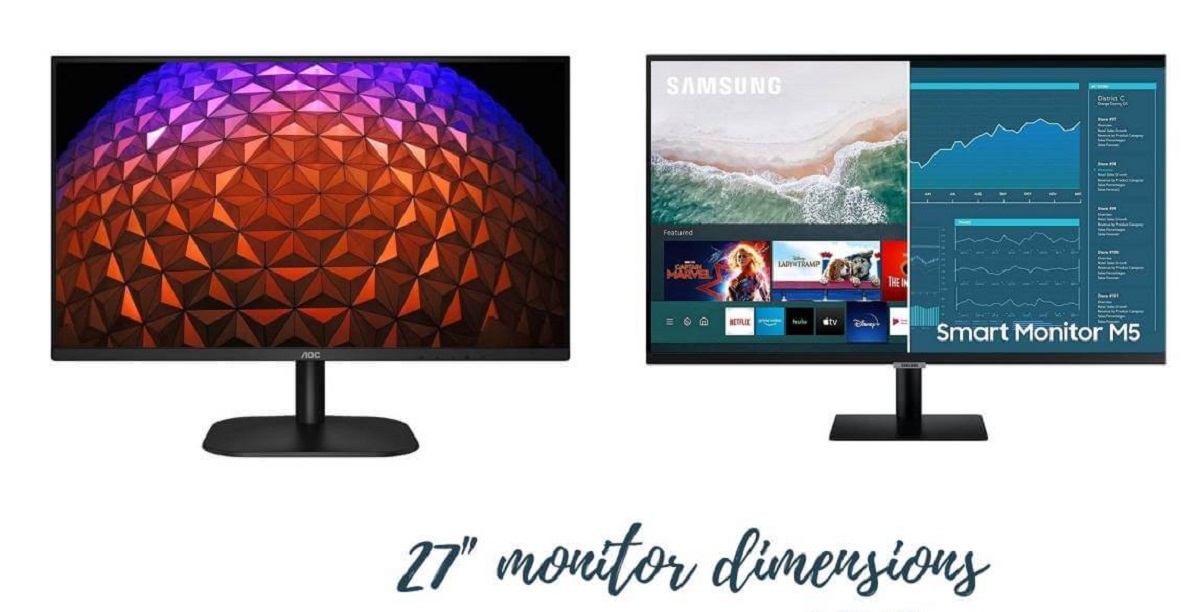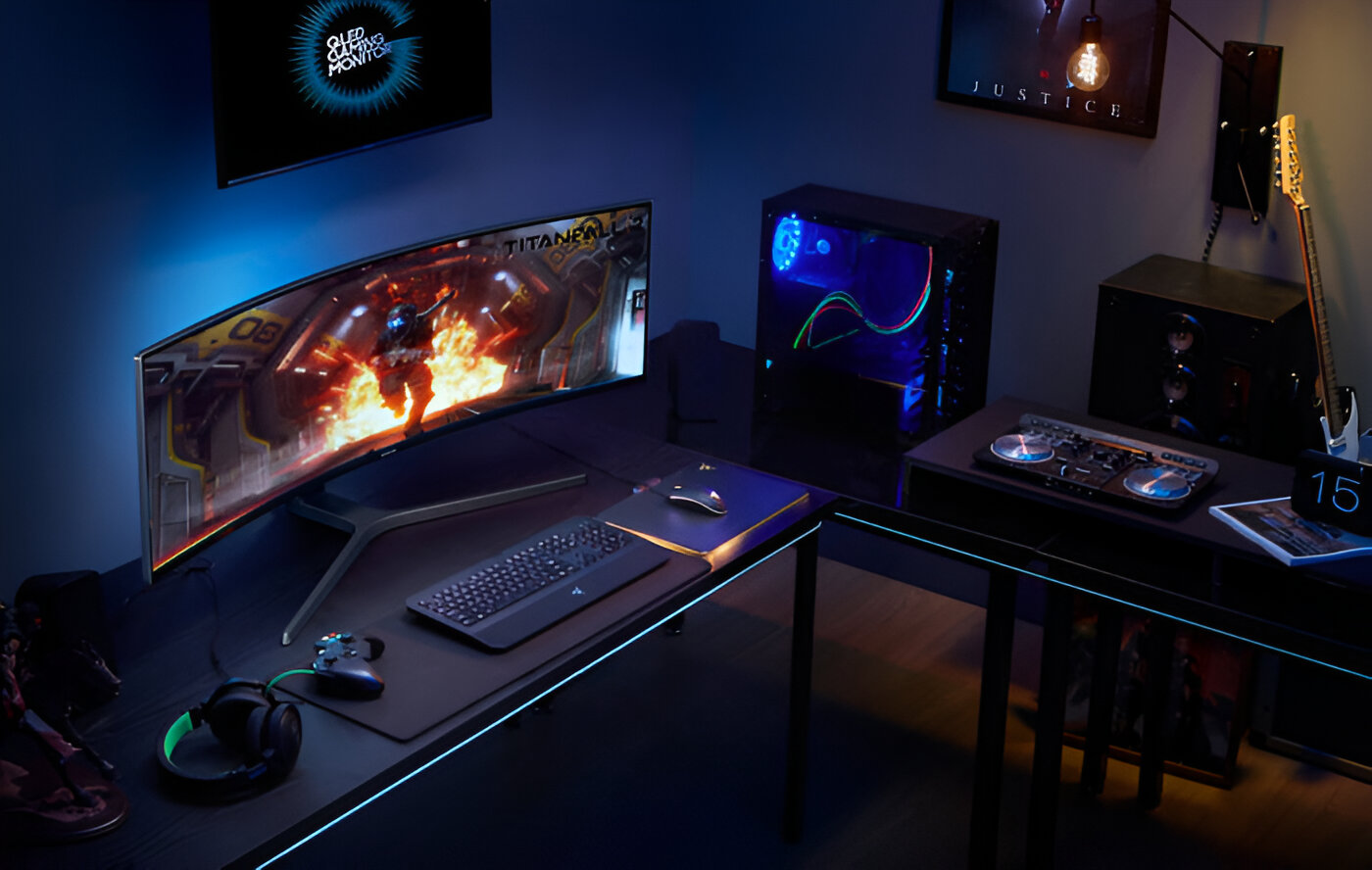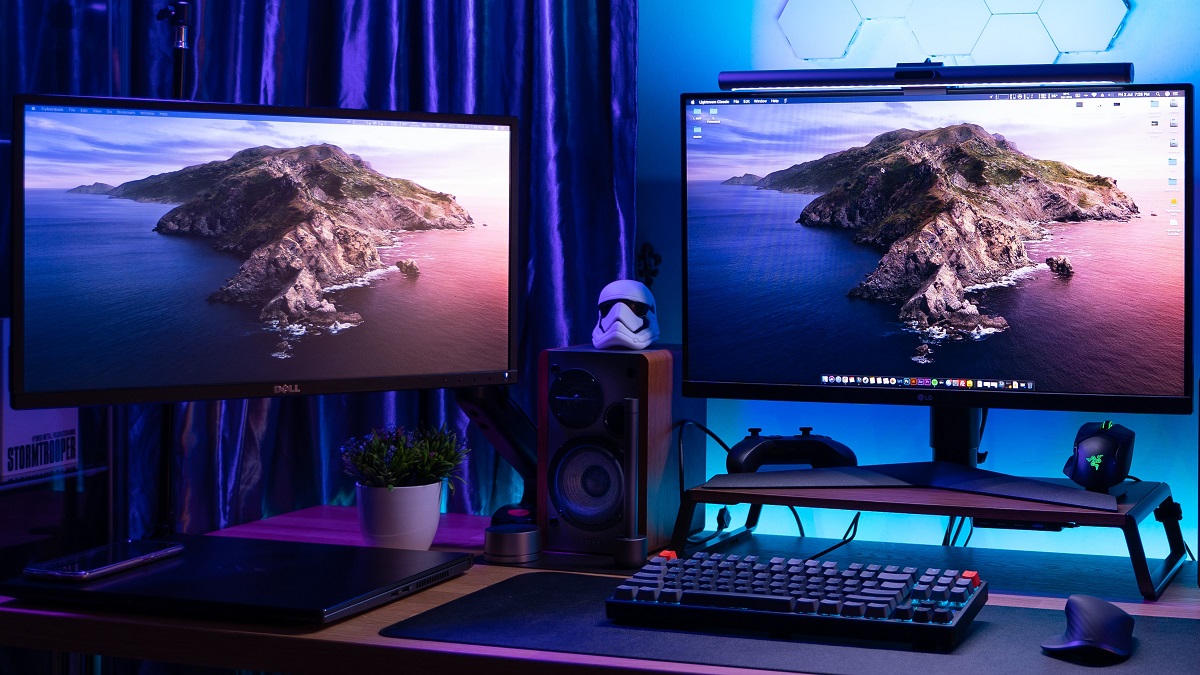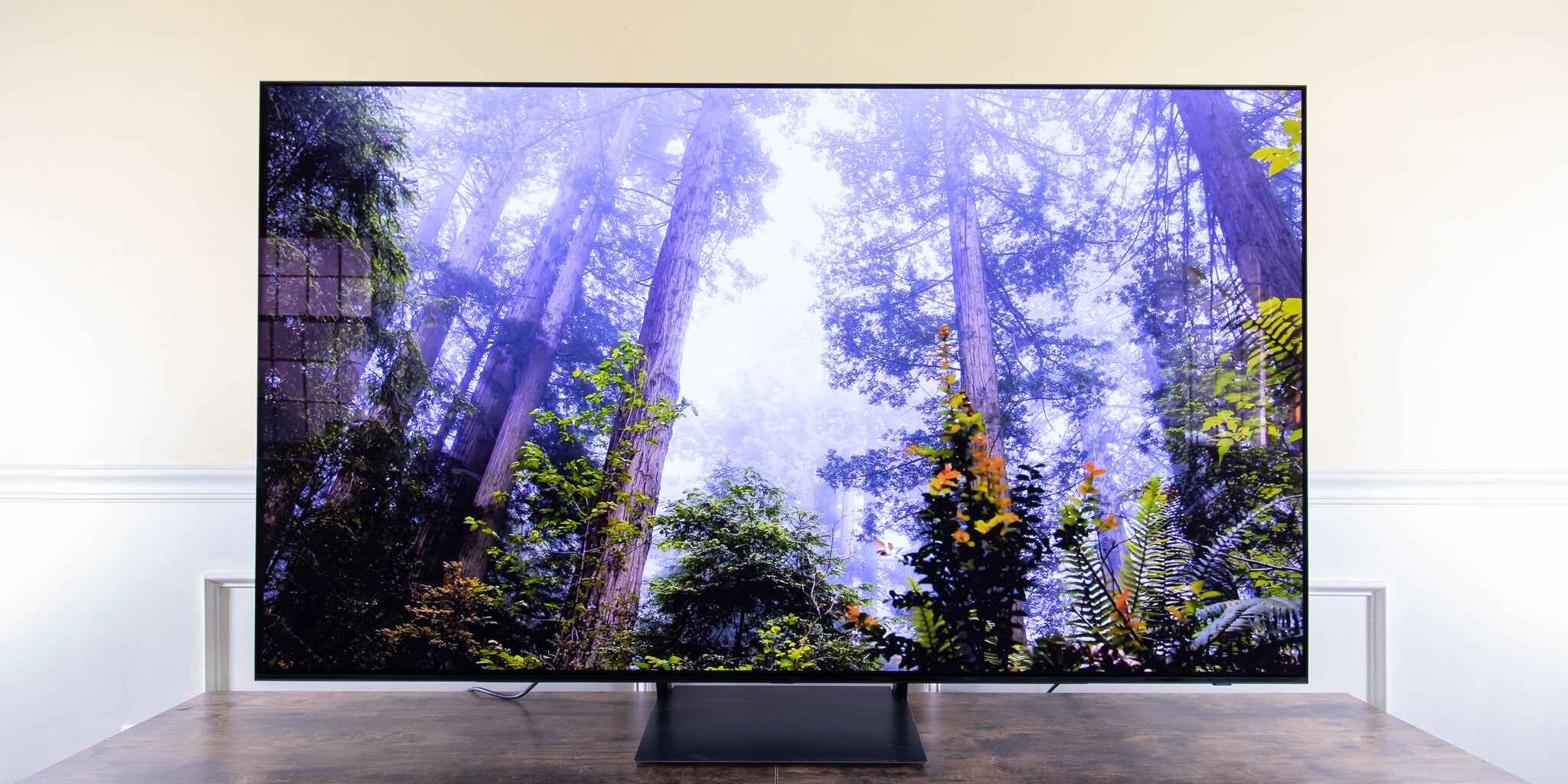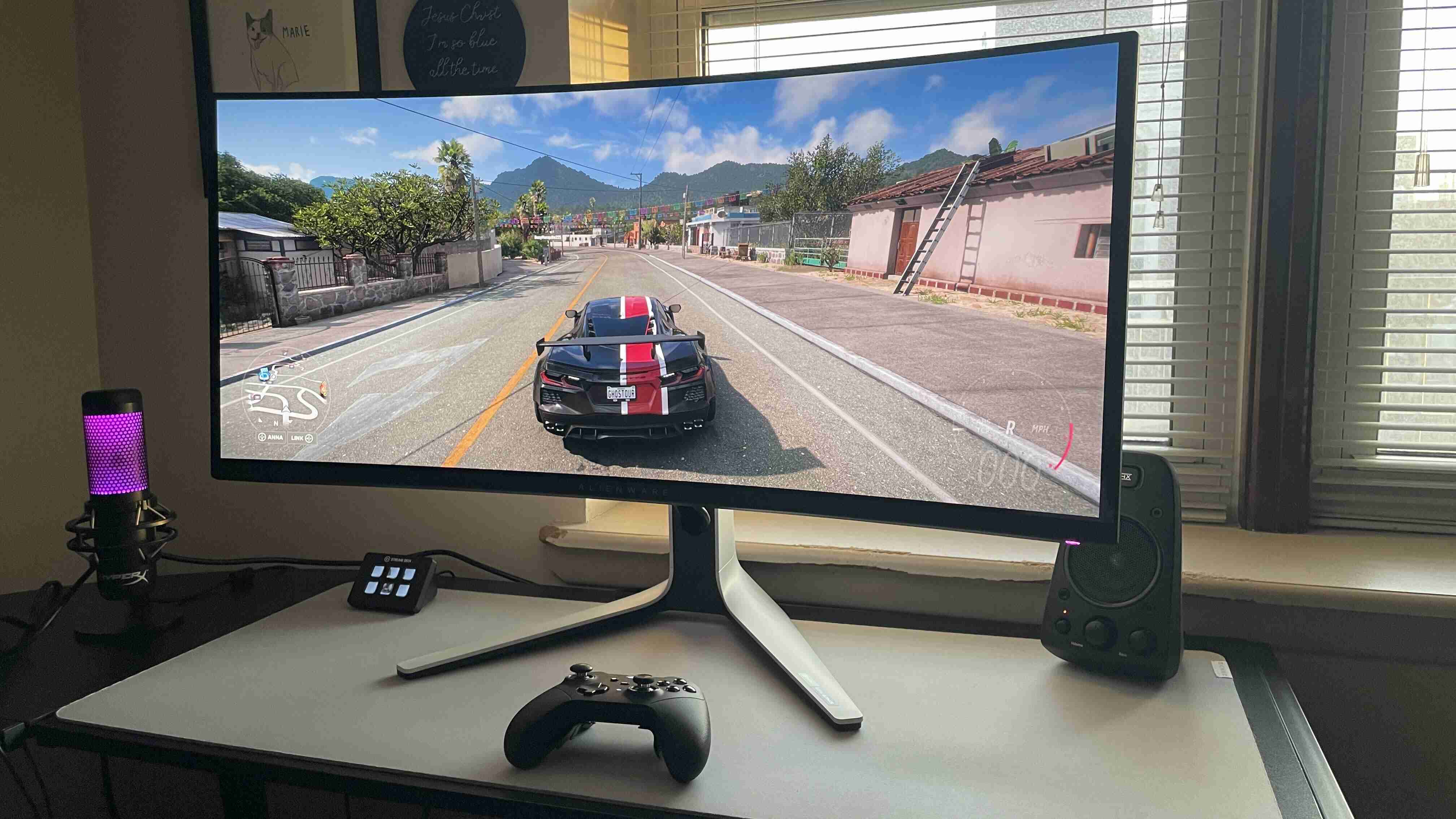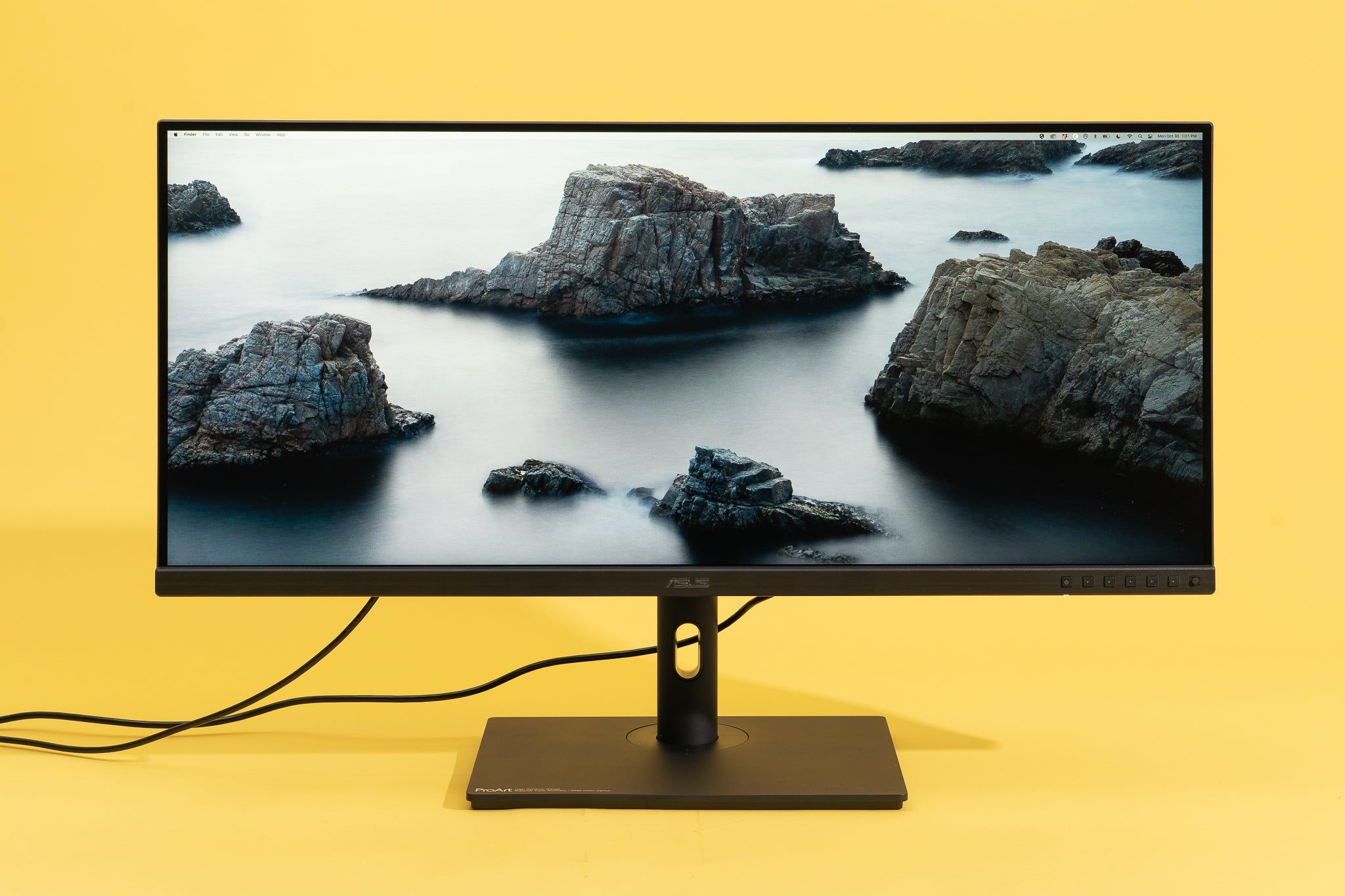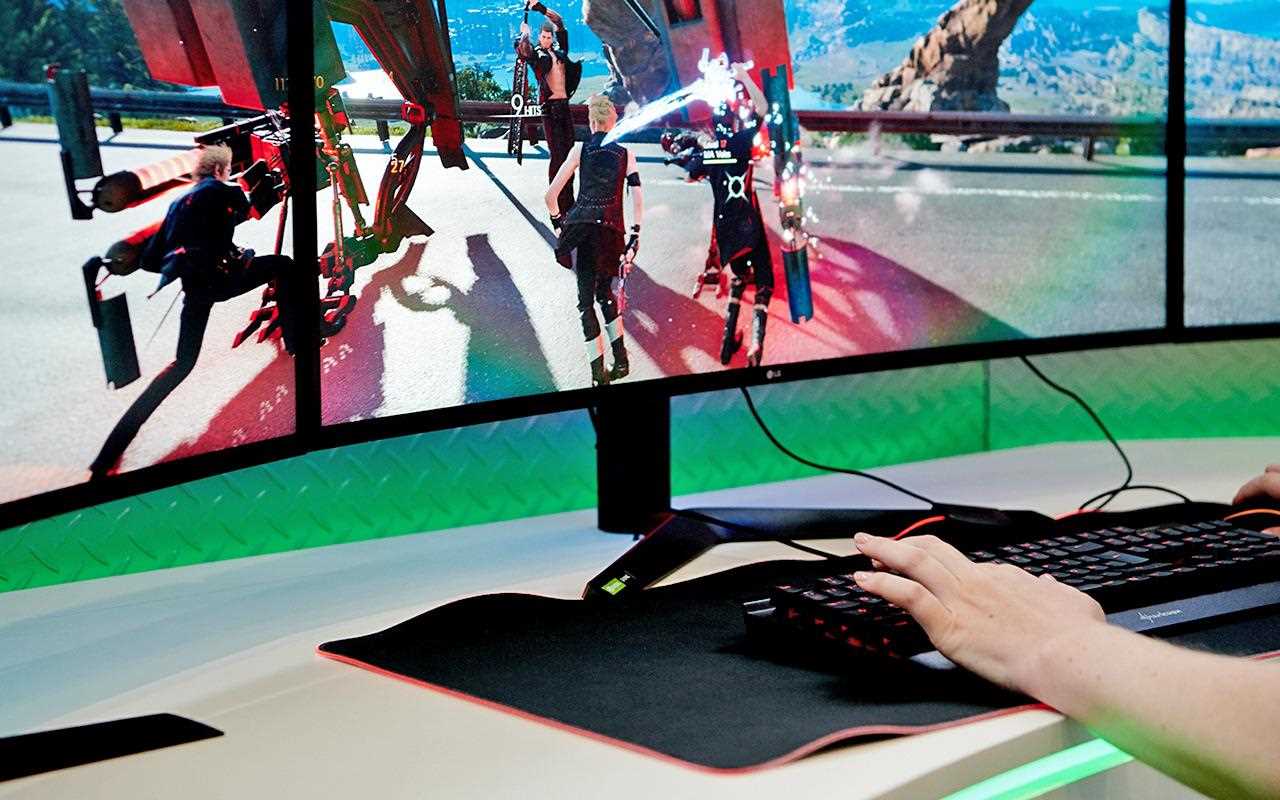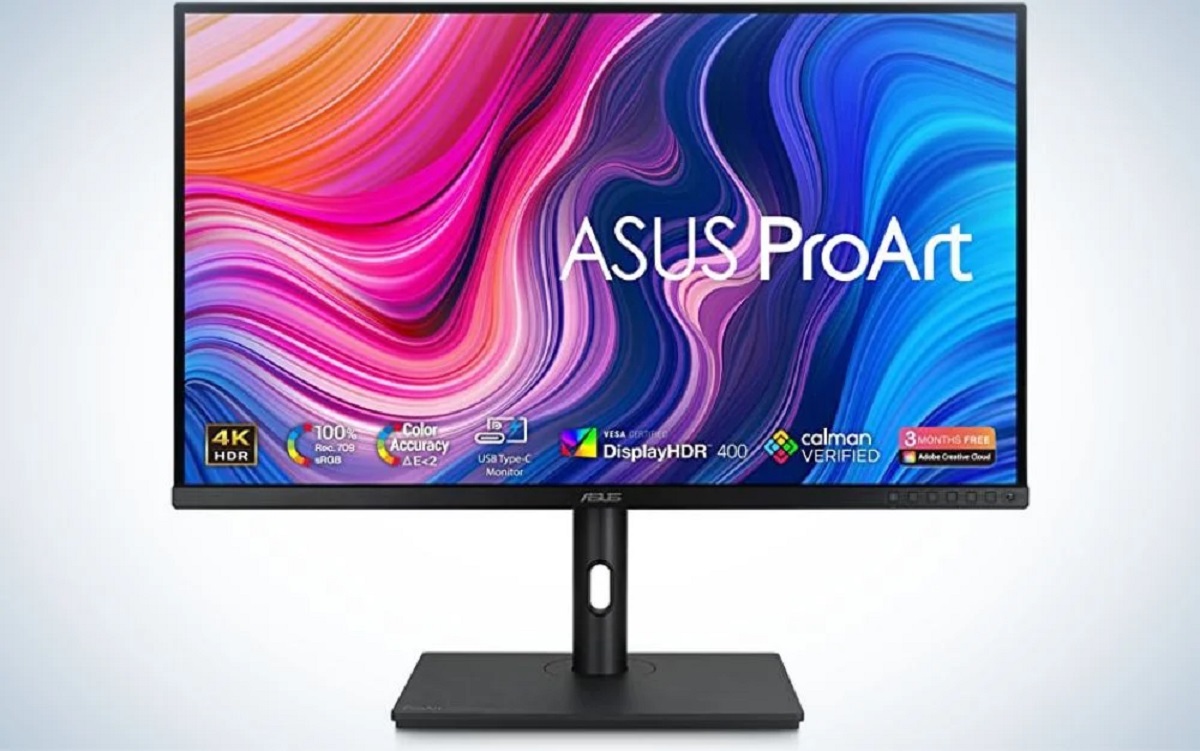Introduction
When it comes to choosing a monitor, one of the most important factors to consider is the screen size. A larger screen can enhance your viewing experience, whether you’re working, gaming, or watching movies. One popular option in the monitor market is the 27-inch monitor. But how big is a 27-inch monitor, and what does it mean in terms of actual dimensions?
In this article, we will delve into the details of a 27-inch monitor and help you understand its screen size, dimensions, and different variations available. Whether you’re a professional seeking a larger display for your work or a gamer looking for an immersive experience, knowing the specifics about a 27-inch monitor can assist you in making an informed decision for your specific needs.
Before we dive into the details, it’s important to note that the inches in a monitor’s size refer to the diagonal measurement of the screen. A 27-inch monitor indicates that the distance from one corner of the display to the opposite corner measures 27 inches. This measurement provides you with an idea of the overall size but doesn’t directly reveal the physical width or height.
In the following sections, we will break down the dimensions of a 27-inch monitor and explore the factors that can affect the actual size of the display. Additionally, we will discuss the different types of 27-inch monitors available in the market, as well as the key considerations you should keep in mind when making a purchase.
What do the inches in monitors mean?
When shopping for a monitor, you’ll often come across the term “inches” to describe the size of the display. But what exactly do these inches signify when it comes to monitors?
The measurement of inches in monitors refers to the diagonal length of the screen, which determines the overall size of the display. It represents the distance between the top left corner to the bottom right corner of the screen. For example, a 27-inch monitor has a diagonal measurement of 27 inches.
It’s important to note that the inches measurement doesn’t provide specific information about the width or height of the screen. The aspect ratio, which is the ratio of the width and height of the display, also plays a crucial role in determining the overall dimensions of the monitor.
Typically, monitors come in different aspect ratios, with the most common being 16:9 and 16:10. The first number represents the width, while the second number represents the height. For example, a 16:9 aspect ratio means that the width of the display is 16 units while the height is 9 units.
When you combine the information about the inches and the aspect ratio, you can get a clearer picture of the actual dimensions of a monitor. A 27-inch monitor with a 16:9 aspect ratio will have different width and height measurements compared to a 27-inch monitor with a 16:10 aspect ratio.
It’s also worth noting that the inches measurement is not the only factor to consider when choosing a monitor. Other factors such as resolution, pixel density, and viewing distance should also be taken into account to ensure an optimal viewing experience.
In the next section, we will delve deeper into understanding the specific screen size and dimensions of a 27-inch monitor.
Understanding the screen size of a 27-inch monitor
Now that we know that a 27-inch monitor refers to the diagonal measurement of the screen, let’s explore what this size means in terms of actual dimensions and how it translates to the viewing experience.
The screen size of a 27-inch monitor can vary depending on the aspect ratio. The most common aspect ratio for a 27-inch monitor is 16:9, which is widely used in gaming and multimedia applications. With this aspect ratio, the width of the screen will be approximately 23.5 inches, while the height will be around 13.2 inches.
However, it’s important to keep in mind that different manufacturers might slightly vary the dimensions, so it’s always a good idea to check the specifications of the specific model you are interested in. Some 27-inch monitors may have a 16:10 aspect ratio, which will result in slightly different width and height measurements.
The screen size of a 27-inch monitor provides ample display real estate, allowing you to have multiple windows or applications open side by side without the need for excessive scrolling. This is particularly beneficial for professionals who require a larger working space for tasks such as video editing, graphic design, or programming.
For gamers, a 27-inch monitor can provide an immersive gaming experience. The larger screen size enhances visibility and allows for a wider field of view in games, giving you a competitive edge. Additionally, many 27-inch monitors offer high refresh rates and fast response times, further enhancing the gaming experience.
When it comes to multimedia consumption, such as watching movies or TV shows, a 27-inch monitor can bring the on-screen action to life. With its larger size, you can enjoy a more cinematic experience, especially when combined with features like high resolutions and vibrant color reproduction.
However, it’s important to consider your desk space and viewing distance when choosing a 27-inch monitor. If your desk is limited in size or you sit relatively close to the screen, a larger monitor may not be the most comfortable option. In such cases, you might prefer a smaller screen size or consider mounting the monitor on a monitor arm to free up desk space.
In the next section, we will explore the different types of 27-inch monitors available in the market and the features they offer.
The actual dimensions of a 27-inch monitor
While the screen size of a 27-inch monitor provides an idea of its overall size, it’s essential to understand the actual dimensions to determine how it will fit into your workspace. The dimensions of a 27-inch monitor can vary depending on the bezel size and aspect ratio.
For most 27-inch monitors with a 16:9 aspect ratio, the approximate width is around 23.5 inches, and the height is around 13.2 inches. However, it’s important to note that these dimensions can slightly vary depending on the specific model and the thickness of the bezels surrounding the screen.
Bezels are the borders around the screen that house various control buttons and indicators. They can vary in width, and thinner bezels are often preferred for a sleek and immersive viewing experience, especially if you plan on using multiple monitors in a multi-display setup.
In addition to the dimensions of the display panel itself, it’s also crucial to consider the overall footprint of the monitor, including the stand. The stand’s width and depth can add a few extra inches to the overall dimensions of the monitor. If space is a concern, you may want to consider a monitor with a compact stand or explore alternative mounting options, such as VESA mounts.
It’s worth noting that the physical dimensions of a 27-inch monitor can also affect its weight. Larger monitors with more robust build quality may be heavier, so it’s important to consider the weight if you plan on mounting the monitor or if you frequently move it between different locations.
When purchasing a 27-inch monitor, it’s advisable to consult the manufacturer’s specifications to determine the exact dimensions and weight of the model you are interested in. By having a clear understanding of the actual dimensions, you can ensure that the monitor fits comfortably on your desk and fulfills your specific requirements.
In the next section, we will explore the different types of 27-inch monitors available in the market, including various panel technologies and features.
Different types of 27-inch monitors
The market offers a wide variety of 27-inch monitors, each with its own unique features and technologies. Understanding the different types can help you make an informed decision based on your specific needs and preferences.
One of the most common types of 27-inch monitors is the LED-backlit LCD monitor. LED backlighting provides better energy efficiency and allows for thinner and lighter display panels. These monitors offer excellent color accuracy, contrast, and brightness, making them suitable for a range of tasks and entertainment purposes.
If color accuracy and precise image reproduction are crucial to your work, you may consider an IPS (In-Plane Switching) panel monitor. IPS panels offer wide viewing angles, ensuring consistent colors and image quality, regardless of your viewing position. These monitors are popular among professionals in fields such as graphic design, photography, and video editing.
For gamers, a 27-inch monitor with a high refresh rate and fast response time is ideal. Monitors with a refresh rate of 144Hz or higher provide smoother and more fluid visuals, reducing motion blur in fast-paced games. Additionally, monitors with Adaptive Sync technologies, such as AMD FreeSync or NVIDIA G-Sync, can eliminate screen tearing and provide a seamless gaming experience.
A 27-inch monitor with a higher resolution, such as 1440p (2560×1440) or 4K (3840×2160), can offer sharper details and increased screen real estate. These higher resolutions are particularly beneficial for content creators, productivity tasks, and media consumption.
Another consideration is the presence of additional features, such as built-in speakers, USB ports, and connectivity options like HDMI, DisplayPort, or USB-C. These extra features can enhance the convenience and versatility of the monitor, allowing you to connect multiple devices or use it as a hub for peripherals.
In addition to the technical specifications and features, the design and aesthetics of the monitor can also vary. Some monitors feature slim bezels for a borderless or nearly borderless appearance, providing an immersive viewing experience, especially in multi-monitor setups. Others may offer ergonomic stands with height, tilt, and swivel adjustments for a comfortable viewing position.
Considering your specific requirements, such as your intended use, budget, and desired features, will help determine the best type of 27-inch monitor for you. Reading reviews and comparing specifications can assist in finding a monitor that strikes the right balance between performance, functionality, and value.
In the next section, we will discuss the key factors to consider when buying a 27-inch monitor to ensure you make the right choice.
Factors to consider when buying a 27-inch monitor
When purchasing a 27-inch monitor, there are several factors you should consider to ensure that you choose the right one for your needs. These factors go beyond just the screen size and can significantly impact your overall user experience and satisfaction.
First and foremost, consider the intended use of the monitor. Are you primarily using it for work, gaming, multimedia consumption, or a combination of these activities? Each use case may have specific requirements in terms of resolution, refresh rate, color accuracy, and connectivity options.
Resolution plays a crucial role in determining the clarity and level of detail the monitor can display. Higher resolutions, such as 1440p or 4K, offer sharper images and increased screen real estate, but may require more powerful hardware to drive them effectively.
If you’re a gamer, pay attention to the monitor’s refresh rate and response time. A higher refresh rate, such as 144Hz or higher, can provide smoother motion and reduce motion blur, resulting in a more enjoyable gaming experience. Similarly, a lower response time minimizes ghosting and lag, ensuring crisp and responsive visuals.
Consider the panel technology used in the monitor. IPS panels provide wider viewing angles and accurate color reproduction, making them suitable for tasks that require color accuracy, such as graphic design or photo editing. TN panels, on the other hand, offer faster response times but at the expense of viewing angles and color accuracy. VA panels strike a balance between the two, offering decent color reproduction, response times, and viewing angles.
Ergonomics should also be considered, especially if you spend long hours in front of the monitor. Look for features such as height, tilt, swivel, and pivot adjustments, as well as VESA mount compatibility. These features ensure that you can position the monitor in a way that reduces eye strain and provides a comfortable viewing experience.
Connectivity options are essential to consider if you plan to connect multiple devices to the monitor. Look for monitors with an ample amount of HDMI, DisplayPort, or USB ports to accommodate your needs. Additionally, if your laptop or device supports it, USB-C connectivity can provide a single cable solution for power, video, and data transmission.
Budget is another significant factor when buying a 27-inch monitor. Determine your budget range and prioritize the features that are most important to you. Keep in mind that while there are budget-friendly options available, investing in a monitor with better specifications and build quality can provide a more satisfying experience in the long run.
Lastly, read reviews and compare specifications of different 27-inch monitor models. Real-world experiences and expert opinions can help you get a better understanding of the performance, reliability, and overall quality of the monitor you are considering.
By considering these factors and evaluating your specific needs, budget, and preferences, you can make an informed decision and find a 27-inch monitor that meets your requirements and provides an enjoyable viewing experience.
Conclusion
Choosing the right 27-inch monitor can greatly enhance your productivity, gaming experience, and multimedia consumption. Understanding the screen size, actual dimensions, and different types of 27-inch monitors can help you make an informed decision based on your specific needs and preferences.
When considering a 27-inch monitor, understand that the inches refer to the diagonal measurement of the screen. The actual dimensions, aspect ratio, and bezel size can vary among different models, so it’s important to check the specifications provided by the manufacturer.
Furthermore, there are different types of 27-inch monitors available, such as LED-backlit LCD monitors, IPS panels, and high-refresh-rate gaming monitors. Each type offers unique features and technologies catered to specific use cases.
When buying a 27-inch monitor, consider factors like resolution, refresh rate, panel technology, ergonomics, connectivity options, and your budget. Evaluating these factors will ensure that you choose a monitor that best suits your needs and provides a comfortable and enjoyable viewing experience.
By doing your research, reading reviews, and comparing specifications, you can make a well-informed decision and invest in a 27-inch monitor that meets your requirements and enhances your overall computing experience.
So, whether you’re a professional seeking a larger workspace, a gamer looking for an immersive display, or an avid multimedia consumer wanting to enjoy movies in a more cinematic manner, a 27-inch monitor can be the perfect choice for you.







